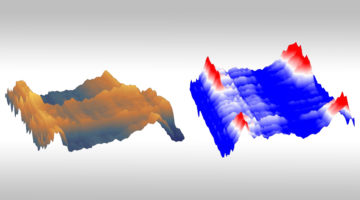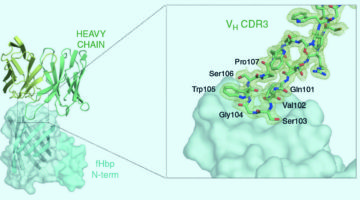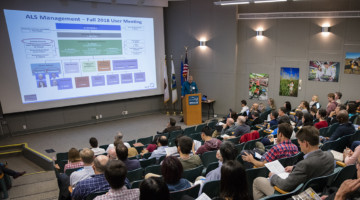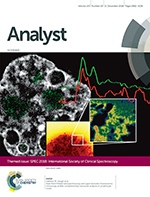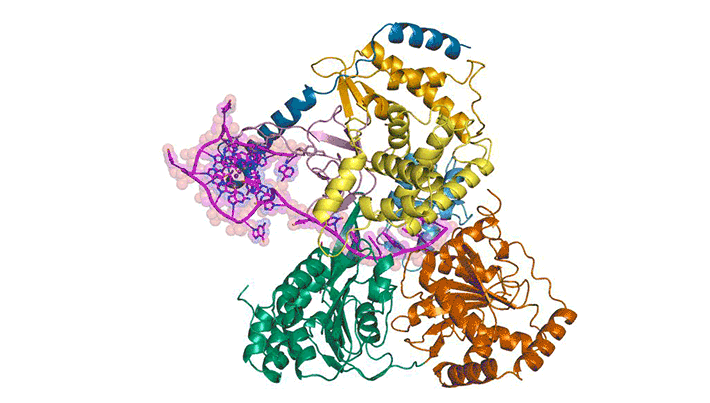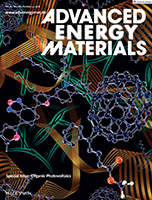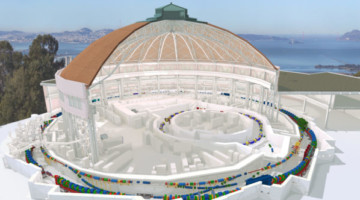An innovative infrared-light probe with nanoscale spatial resolution has been expanded to cover previously inaccessible far-infrared wavelengths. The ability to investigate heterogeneous materials at nanometer scales and far-infrared energies will benefit a wide range of fields, from condensed matter physics to biology. Read more »![]()
![]()
All News & Updates
Bob Gassaway Receives 2018 Tim Renner User Services Award
Bob Gassaway was awarded the 2018 Tim Renner User Services Award for his longstanding commitment to simultaneously supporting the ALS user community and advancing electrical safety at the ALS. Gassaway is an electronics engineering technologist who has been at Berkeley Lab for 30 years. Read more »
Noah Schwartz, User Office Supervisor
Noah Schwartz has worked at Berkeley Lab for 13 years, joining the ALS as User Services Office Supervisor in August. He jumped right in to help plan the User Meeting in October and will continue to work to improve the overall user experience. Read more »
Targeting Bacteria That Cause Meningitis and Sepsis
Researchers determined the structure of a human antibody that broadly protects against a bacterium that causes meningitis and sepsis. The work provides molecular-level information about how the antibody confers broad immunity against a variable target and suggests strategies for further improvement of available vaccines. Read more »![]()
![]()
2018 ALS User Meeting Highlights
Past, present, and future converged at the 2018 ALS User Meeting, where attendees celebrated the 25th anniversary of first light and CD-1 approval of the ALS Upgrade project. Planned with the next generation of users in mind, this year’s meeting emphasized tutorials on a wide variety of ALS techniques for both new and seasoned users. Read more »
Near-field infrared nanospectroscopy and super-resolution fluorescence microscopy enable complementary nanoscale analyses of lymphocyte nuclei
Recent super-resolution fluorescence microscopy studies have revealed significantly altered nuclear organization between normal lymphocyte nuclei and those of classical Hodgkin’s lymphoma. Reported here are the first near-field IR imaging of lymphocyte nuclei, and far-field IR imaging results of whole lymphocytes and nuclei from normal human blood. Read more »
Unwinding a Quadruple Helix
The double helix is not the only structure formed by DNA and RNA. Guanine-rich DNA and RNA sequences can fold into quadruple-helix structures called G-quadruplexes. Recently, researchers visualized the unfolding of a G-quadruplex by a protein called DHX36, gaining valuable insight into a potential target for drug development. Read more »
Scientists Present New Clues to Cut Through the Mystery of Titan’s Atmospheric Haze
Saturn’s largest moon, Titan, has a nitrogen-rich atmosphere, the formation of which has been the source of some scientific debate. Researchers have zeroed in on a low-temperature chemical mechanism that may have driven the formation of multiple-ringed molecules—the precursors to more complex chemistry now found in the moon’s brown-orange haze layer. Read more »
Miscibility–Function Relations in Organic Solar Cells: Significance of Optimal Miscibility in Relation to Percolation
In this article, Ye et al. present the determination of liquidus miscibility and its temperature dependence of organic films by scanning transmission x‐ray microscopy and outline an approach to convert liquidus miscibility to an effective Flory‐Huggins interaction parameter χ, which will pave a way to predict morphology and processing strategies of polymer solar cells. Read more »
ALS-U Project Receives CD-1 Approval
The ALS Upgrade (ALS-U) project has received federal approval (CD-1) to proceed with preliminary design, planning, and R&D work. This major upgrade will boost the brightness and coherent flux of ALS soft x-ray beams at least a hundredfold, enabling transformative science that cannot be performed on any existing or planned light source in the world. Read more »
- « Previous Page
- 1
- …
- 89
- 90
- 91
- 92
- 93
- …
- 139
- Next Page »
